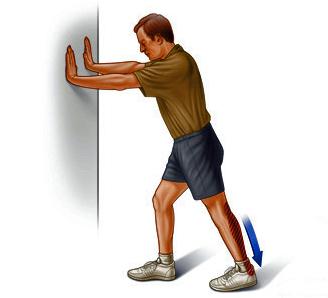Are there different types of plantar fasciitis?

Yes, there are actually three different conditions which are related to plantar fasciitis and the severity of plantar fascia is. These are:
Mild–strain and/or tears to the plantar fascia, and discomfort upon walking.
Moderate–this is usually accompanied with more intense pain upon walking in the pain does not subside throughout the day or diminishes very little. This includes heel pain as well.
Severe–this is the worst form of plantar fasciitis, and is accompanied by very intense pain which prevents normal everyday activities. This can be indicative of a heel spur, which is a bony growth caused by the plantar fascia pulling away from the bone. This makes it even more difficult and painful when walking, and plantar fasciitis should be treated before this stage. If you have severe plantar fasciitis, a doctor visit is required.
What are the symptoms of plantar fasciitis?
Most people describe plantar fasciitis has a burning, stabbing, or extremely aching pain in the heel of the foot, or arch. Most people feel in the morning because the plantar fascia ligament tightens up, and is forced to contracting the night. When pressure is then put on the foot and body weight is exerted, the plantar fascia must quickly expand. This is why most people describe their first steps in the morning as being the most painful. Over the day, the ligament loosens up so the payment in association with plantar fasciitis reduces. Or people noticed this after sitting for long periods of time.
To overcome this, stressing the plantar fascia before walking or standing in the morning, usually helps reduce some of the symptoms. This can also be done if you've been sitting for an extended period of time as well. To do this bring your toast towards your body or upwards. This will stretch out the arch of your foot as walls the Muscle, which are what make the plantar fascia tight. You can also buy some of these areas as well, this will reduce some of the pain as well as the information which is what leads to the pain and plantar fasciitis. Also, avoid standing quickly or putting weight on your feet quickly, also what you can do is slowly ease into adding bodyweight to your feet the first thing in the morning. Gradually adding weight to your feed helps to stretch up the plantar fascia ligament rather quickly without pain.
You may be suffering from plantar fasciitis if you can describe some of the symptoms. Pain starts out as dull or sporadic and the heel or the arch, and then becoming a sharp consistent pain. You notice pain in the mornings, especially with the first few steps after getting out of bed. Another common sign, is inflammation, especially in the feet dangle art or sole of the foot. Tightness in the calf or a Kiwi's tendon is another major sign of plantar fasciitis, low heel pain after long periods of walking or standing, Pena worsens when climbing stairs or on the toes, or payment lessons from the morning through normal day activities.
How do you diagnose plantar fasciitis?
The easiest ways to go to a medical doctor and talk about your symptoms and see if you have plantar fascia. They will be able to observe how you walk, inflammation in the area, and have a much better grasp of the signs and symptoms and triggers of plantar fasciitis. Also, you can get an x-ray of your foot if the physician suspects a problem in your bones, such as a heel spur or bony growth in the area, this can be brought about by plantar fasciitis if it is left untreated for an extended period of time. Talking your doctors easily the best way to determine if it is plantar fasciitis or a more serious condition. You should not hold off on this and go as quickly as possible.

